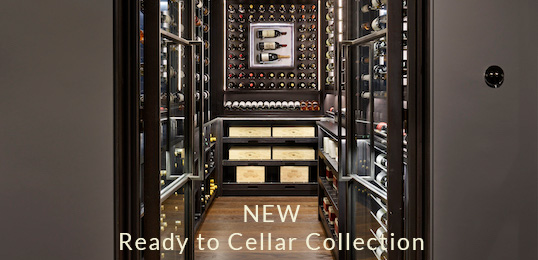By the time you read this, Bordeaux could be finishing one of its earliest ever harvests. If 2011 turns out to be another very good vintage, which seems entirely possible in early August, the world’s largest fine wine region will have had a remarkable run of good fortune. 2009 and 2010, currently maturing in the châteaux’s cellars, were two of the greatest post-war years.
Such a trio would be unprecedented in the Gironde. Whether it’s the result of long-term climate change or just a three-year weather blip is uncertain, but my money is on the former. If that’s true, then Bordeaux will never be quite the same again. Even 20 years ago, outstanding vintages were rare; now they’re like proverbial London buses. And even when the weather is less kind to producers, the techniques and knowledge they employ in the vineyard and winery ensure that their wines are more consistent than ever.
It’s worth bearing this in mind when you’re considering buying young Bordeaux, especially if it’s en primeur (the French term for what traders call futures). Put simply: there is a lot of smart wine to go around. If you purchase a case of 2010 while it’s still in barrel, you won’t take delivery of your wine for at least another year and probably longer. So do you need to buy now?
Historically, there were two reasons for committing your money en primeur: to invest (on the assumption that your wine will increase in value) and/or to secure something that will be difficult to find in due course. Neither factor is as cut and dried as it used to be. After years of increasing in value, Bordeaux prices have flattened recently, with a few high-profile exceptions such as Châteaux Lafite, Latour and Pétrus. The returns are not as spectacular as they were and may get worse. The world economic outlook is highly unpredictable at present. Just ask the Greeks, the Portuguese, the Irish and the Americans.
With more fine claret on the market than ever (2000 and 2005 were excellent harvests, too) there is less of a rush to buy early. Before you do, have a look at comparative prices from other vintages, particularly “lesser” years like 2001 and 2004, which are drinking well now and are good value. 2010 is the priciest vintage in the history of Bordeaux, and that’s saying a lot.
Even if you choose to wait, I still think 2010 is an exceptional year. It was a very different vintage from 2009 – cooler, smaller and more expensive by a factor of around 15% – but complements it in many ways. If the 2009s were plush, lush and fruit dominated, the 2010s are much more structured and restrained. The two vintages have been characterised, somewhat simplistically perhaps, as “American” and “European” in style. But the shorthand makes some sense. The 2009s will be ready to drink long before the 2010s.
The latter vintage is highly unusual, combining marked alcohol with fresh acidity and very concentrated tannins. It’s rare to find all three in the same year, although this is what gives the best 2010s their ageing potential and quality. That said, the vintage is far less consistent than 2009, when even basic red Bordeaux was very drinkable. In 2010, the divide between the leading châteaux and the mass of lesser properties was greater than ever. Managing tannins required skill, experience and, on occasion, cash.
So who made the best wines in 2010? My top ten, based on quality alone, are Vieux Château Certan and Châteaux Margaux, Haut-Brion, Pétrus, Latour, Ausone, L’Evangile, Mouton-Rothschild, Cos d’Estournel and Pontet-Canet. I’m sorry about the price of these wines. Even the cheapest, Pontet-Canet, sells for £1320 in bond, while a case of Pétrus would cost you more than £20,000.
But don’t despair. What people forget is that Bordeaux is a very large region, made up of 120,000 hectares of vineyards and 10,000 châteaux, not just a handful of headline-grabbing wines. There are plenty of reasonably priced clarets, even in a vintage like 2010. Value for money wines I particularly recommend are Goulée, La Petite Eglise, Réserve de la Comtesse and Châteaux Moulin-Saint-Georges, Phélan-Ségur, Batailley, Pey La Tour, d’Angludet, Les Ormes de Pez, Capbern-Gasqueton, Grand-Puy-Ducasse, Cantemerle, Poujeaux and Teyssier, none of which costs more than £350 a case in bond.
I’ve concentrated on reds in this article, but you shouldn’t overlook the whites. The sweet wines are less good than in 2009, a much more intense vintage for Sauternes, but the dry wines of Péssac-Léognan are brilliant. They are unlikely to increase in value – investors and speculators look away – but for those of us who buy our wine to drink, there are some delicious Sauvignons and Sauvignon/Semillon blends. My standouts are Pavillon Blanc, Clos Floridène, Domaine de Chevalier and Châteaux La Mission-Haut-Brion, Haut-Brion, Latour-Martillac, de France, de Fieuzal, Smith-Haut-Lafitte and La Louvière.
If you do choose to buy some 2010s, make sure you go to a reputable wine merchant, particularly if you are buying en primeur. There have been a couple of well-publicised cases in recent years where wine “investment” companies have made off with people’s money. Reliable merchants in the UK include Farr Vintners, Berry Brothers, Bordeaux Index, J&B, The Wine Society, Corney & Barrow, OW Loeb, Uncorked, Armit, Handford, Private Cellar, Jerobams, Lea & Sandeman, Lay & Wheeler, Tanners, Adnams and Bibendum.
Whatever you think of some of the high prices in 2009 and 2010 – and they’ve excluded all but the super rich for the blue chip wines – these are two of the greatest vintages of my wine-tasting lifetime. As we await the world’s verdict on the 2011 harvest, we should rejoice that two, such contrasting vintages are available to us now. Claret lovers have never had it so good.
Tim Atkin MW’s full report on the 2010 vintage, complete with detailed tasting notes on more than 100 wines, is available on www.timatkin.com/reports, priced at £10.
Images courtesy of Tim Atkin Photography


